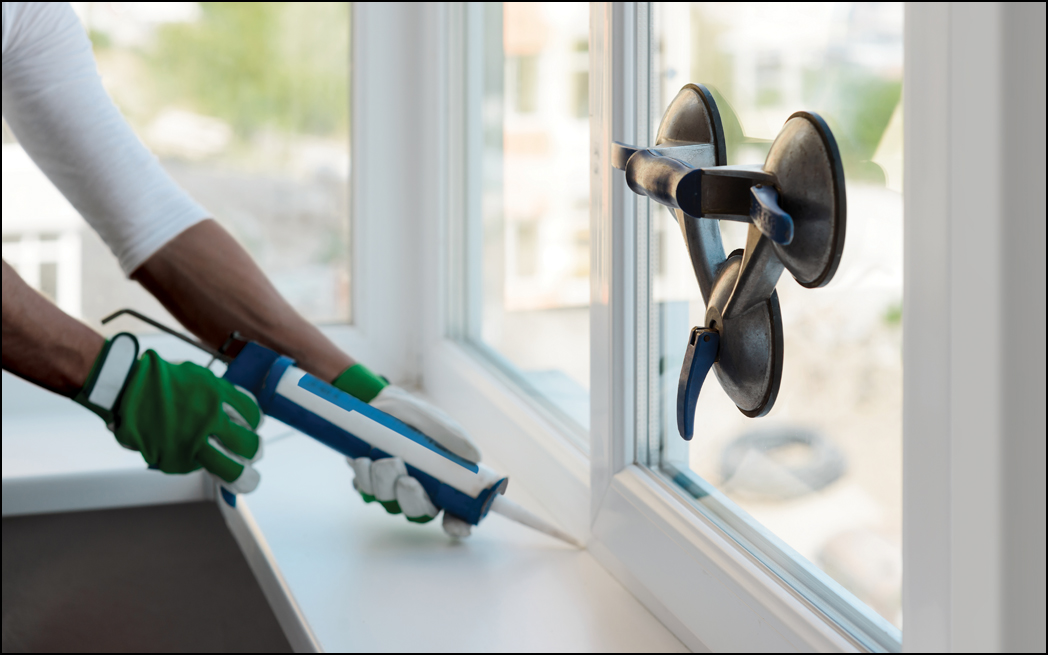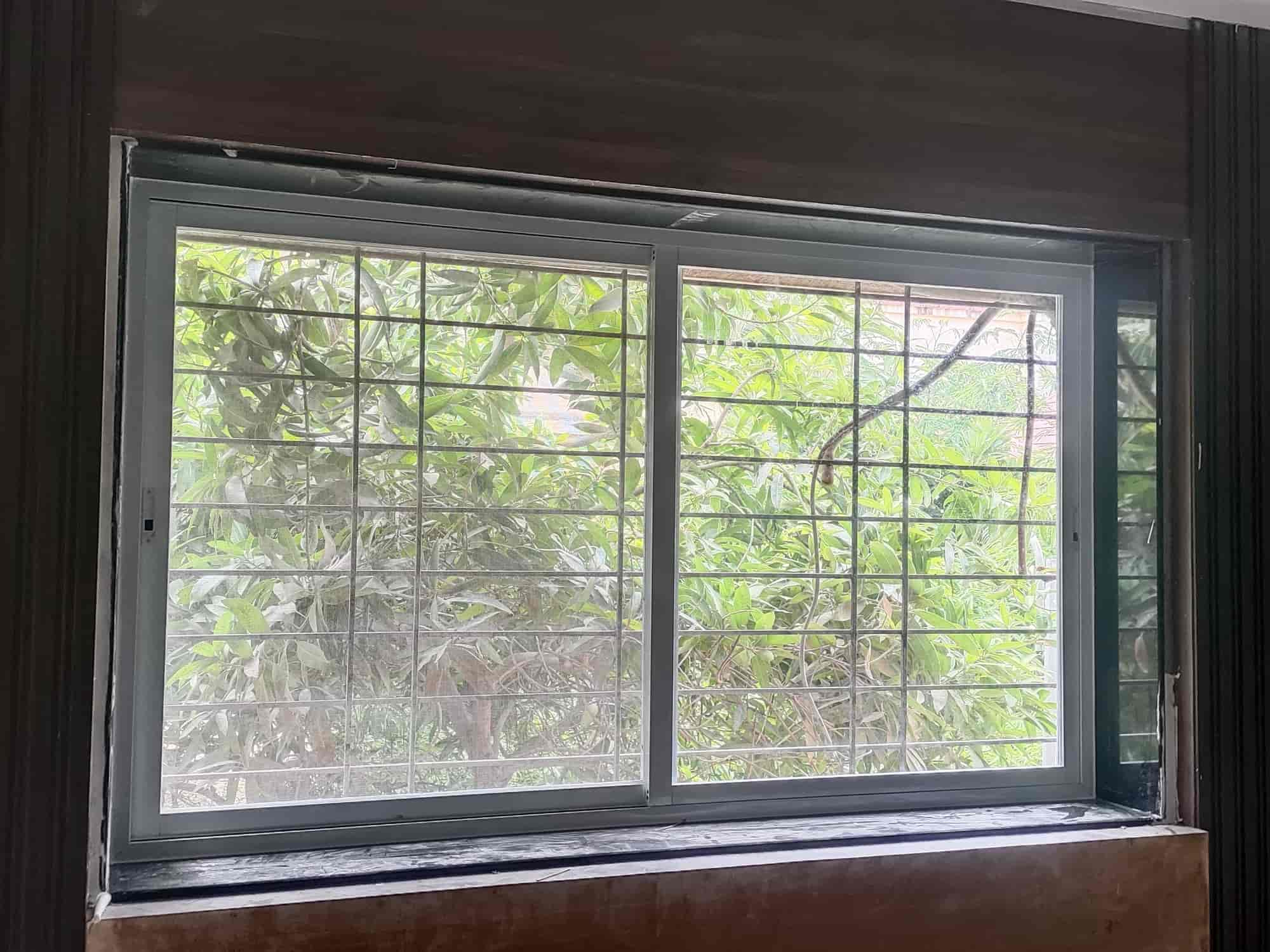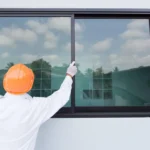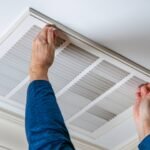Double-Hung vs. Casement: Which Style Reigns Supreme?
When it comes to selecting the right type of windows for your home, the choice often boils down to functionality, design, and convenience. Two of the most popular styles are double-hung and casement windows, and each comes with its own set of advantages that cater to different preferences and needs. Double-hung windows feature two sashes that slide vertically; this allows for versatile ventilation options as both the top and bottom sash can be opened. This feature is particularly beneficial in homes where airflow needs vary across seasons. In contrast, casement windows are hinged on one side and open outward, which typically allows for better ventilation since they catch breezes coming from the side. The choice between the two styles largely depends on your specific requirements for air circulation, ease of operation, and aesthetic alignment with your home’s overall architecture.
Moreover, aesthetics play a pivotal role in decision-making. Double-hung windows offer a classic look that complements traditional home styles, providing a timeless appeal. They can be adorned with a variety of grids and colors that enhance your home’s exterior. Casement windows, on the other hand, often lend themselves more readily to modern designs, featuring sleek lines and large glass panes that maximize views and natural light. Choosing the style that complements the architectural integrity of your home while also meeting your ventilation and maintenance preferences is crucial in achieving both beauty and functionality.
Energy-Efficient Windows: Are They Worth the Investment?
In an age where energy conservation is paramount, investing in energy-efficient windows can yield significant returns beyond mere aesthetics. These windows are designed with advanced technologies that minimize heat transfer, thus keeping your home warmer in winter and cooler in summer. The installation of Energy Star-rated windows can dramatically lower your energy bills, often reducing them by up to 15% to 20%. Beyond financial savings, energy-efficient windows contribute to a more sustainable environment by decreasing overall energy consumption.
However, while the initial cost may be higher compared to traditional windows, the long-term benefits, both in energy savings and tax incentives, frequently justify the upfront investment. Additionally, advances in window technology have led to a range of options, from Low-E glazing to inert gas fills, providing homeowners with robust solutions tailored to specific climates and landscaping considerations. Before proceeding, it is essential to assess local weather patterns, potential energy savings, and, importantly, to calculate the return on investment (ROI) in consultation with an energy specialist. Adopting energy-efficient windows is a significant step towards optimizing your home’s energy usage while also enhancing its overall market value.
Unique Window Materials: From Vinyl to Wood, What’s Best for Your Home?
Choosing the right window material is a pivotal decision that will affect your home’s aesthetics, performance, and overall maintenance needs. Vinyl windows, known for their durability and low maintenance, are a popular choice among homeowners. They resist fading, scratching, and warping, making them ideal for regions with extreme weather conditions. Furthermore, they are available in a variety of colors and styles, providing flexibility for customization.
Wood windows, on the other hand, exude a timeless elegance and warmth that many homeowners find appealing. They can be painted or stained to match the interior décor and provide excellent insulation properties. However, they require more maintenance, including regular painting or sealing to protect them from moisture and pests. Composite and fiberglass window materials have emerged as hybrids, offering a blend of durability and aesthetic appeal without the high maintenance associated with traditional wood. Each material’s unique attributes warrant careful examination based on individual preferences, climate considerations, and budget constraints. Ultimately, the best choice hinges on balancing your aesthetic desires with practical functionality.

Prepping for Success: Essential Steps Before Your Window Installation
Measurements Matter: How to Ensure a Perfect Fit
Accurate measurements are the cornerstone of any successful window installation project. Even a fraction of an inch off can lead to complications that not only disrupt the installation process but could also compromise the window’s performance and insulation capabilities. It’s imperative to measure the height and width of the existing window frame from multiple points to ensure that you account for any discrepancies in the wall or frame. Additionally, consider measuring the depth of the window frame since different window types have various depth requirements.
If your home has settled over the years, making sure the frame is square is essential as this can affect how well the window fits. Using a level and measuring tape, you can meticulously mark your measurements for accuracy. While some homeowners might feel tempted to take on this task independently, calling in professionals with experience and tools can prevent any costly errors. A professional installer can provide precise measurements, helping to avoid headaches down the line.
Choosing the Right Season: Timing Your Installation for Optimal Results
The timing of your window installation should not be overlooked. While it might seem practical to schedule installations whenever convenient, factors such as weather conditions, temperature, and humidity can significantly influence the long-term success of your installation. Spring and fall are typically considered the best seasons for window replacement, as temperatures are moderate, reducing risks associated with thermal expansion and contraction.
Moreover, scheduling installations during these transitional seasons minimizes the discomfort associated with live-in renovations that can happen during colder months. Extreme temperatures can cause expansion and contraction of window frames and building materials, which can result in improper sealing and insulation if not managed correctly. It’s also wise to plan for any local weather patterns, such as spring rain or the high winds of fall. Consulting with seasoned window installers can provide valuable insight into when your installation should take place, ensuring optimal conditions for a successful project.
DIY vs. Professional Installers: When to Call in the Experts
One of the most pressing questions homeowners face when preparing for window installation and replacement is whether to embark on a DIY journey or engage professional installers. While the allure of saving on labor costs is undeniable, the complexities associated with window installation cannot be underestimated. Improper installation can lead to a multitude of issues, including air leaks, moisture problems, and compromised structural integrity—all of which may result in costly repairs in the future.
For seasoned craftsmen who have experience with home improvement projects, a DIY approach can prove rewarding, especially if the project is small or involves easily accessible windows. However, for most homeowners, hiring professional window installers is highly advisable. Professionals come equipped with the right tools, knowledge, and experience to ensure that the job is executed flawlessly. They can also navigate important local building codes and secure necessary permits, a vital aspect that often gets overlooked in DIY ventures.
The Window Installation Process: A Step-by-Step Breakdown
Removing the Old Windows: Tips for a Smooth Transition
The removal of old windows is a critical step that demands meticulous attention to avoid damaging the surrounding structure. Begin by carefully removing the interior trim and sashes to access the window frame. It is imperative to take your time with this process, as rushing can cause unintended damage to the walls or the rest of the window frame. If your home has window stops or other components like casings, these must be carefully pried away without splintering the wood or displacing the nails. Use a pry bar gently and tap it with a hammer if necessary to create leverage.
Safety should also be a priority during the removal process. Make sure to wear proper personal protective equipment (PPE), including gloves and safety goggles, to protect yourself from sharp edges and debris. Once the frame is exposed, inspect for rot or damage, as these may require immediate repairs before new windows can be installed. Properly disposing of the old window materials or recycling them can also ensure that the project aligns with your sustainability goals.
Insulation and Sealing: Securing Your Investment Against the Elements
Proper insulation and sealing are perhaps the most crucial elements in ensuring your new windows perform well against the elements. Once your old window is removed and the rough opening is prepared, fill any gaps and cracks with caulk or foam insulation to prevent drafts and water infiltration. During installation, place a bead of caulk along the exterior edge of the window frame to create a watertight seal when the window is inserted into the opening. This step is indispensable; failure to adequately seal the perimeter of windows can lead to moisture buildup and mold or mildew formation, undermining the overall integrity of your installation.
Pay close attention to the materials you use for insulation, as there are various options ranging from expanded polystyrene (EPS) to foam spray. Choosing high-quality materials enhances the energy efficiency of your windows while providing significant soundproofing benefits. Additionally, follow the manufacturer’s installation instructions to the letter, as these are based on extensive testing to ensure optimal performance. A small lapse in following recommended procedures can result in issues down the line that could have been avoided.
Finishing Touches: A Guide to Sills, Trim, and Caulking
The finishing touches make a substantial difference in the overall appearance of your window installation. After placing the new windows, the next step involves crafting a neat and aesthetically pleasing transition between the window frame and the adjacent surfaces. Properly installed sill plates and trim are not only visually appealing, but they also serve functional purposes like diverting water away from the window frame, which is crucial in preventing damage over time.
For sills, consider opting for materials that are moisture-resistant, particularly if your region experiences heavy rainfall. The trim around your windows should also be installed carefully, with joints tightly fitted and edges cleanly painted or stained to match your interior décor. Use quality paint or sealant to protect wooden trim from moisture and damage and enhancing its longevity. Finally, a thorough caulking around the exterior frames ensures that your windows are airtight and watertight, rounding off the installation process and safeguarding against the elements.

Post-Installation Care: Maintaining Your Windows for Longevity
Cleaning Tips: How to Keep Your Windows Sparkling and Clear
Once your windows are installed, maintaining their clarity and appearance requires continued attention. It’s essential to establish a cleaning regimen that enhances the aesthetics of your windows while also protecting them from dirt and environmental factors that may impede their performance. For regular upkeep, use a mixture of mild dish soap and water in a spray bottle to clean both the glass and frames. Avoid harsh chemicals that may damage window coatings or seals.
For glass cleaning, microfiber cloths are highly recommended as they reduce the risk of scratching and leave a streak-free shine. Always clean on cloudy days to avoid streaks, as direct sunlight can cause soap and water to dry too quickly on the glass surface. Additionally, consider using a squeegee after washing your windows to achieve optimal clarity. Regularly check the seals and caulking around your windows, as this can help catch any potential issues before they escalate into costly repairs.
Recognizing Potential Issues: Signs That Your Windows Need Attention
Every homeowner should be vigilant about signs that indicate windows may need repairing or replacement, as catching these issues early can save time and money in the long run. Common indicators include drafts, condensation between panes, difficulty opening or closing the windows, and visible wear around frames or sill components. If you notice any of these issues, it’s crucial to address them swiftly.
Moreover, take note of any increase in your energy bills; this can be a significant indicator that your windows aren’t performing efficiently. Routine inspections can help identify issues before they lead to long-term damage. A yearly examination of all window seals, caulking, and frames can go a long way in maintaining their integrity and performance. Investing in a few moments of preventive care can significantly extend the life of your windows and enhance their effectiveness.
Enhancing Curb Appeal: Window Accessories That Make a Statement
While the windows themselves provide capstone benefits in terms of functionality and performance, window accessories can significantly enhance curb appeal and add personality to your home’s exterior. Window boxes filled with vibrant flowers can offer warmth and charm, inviting more natural beauty into the setting. Additionally, attractive window shutters can create depth and dimension, breaking the visual monotony of plain walls while also allowing you the flexibility of color choice that complements your overall exterior.
Furthermore, window treatments such as elegant drapery or stylish blinds can not only accentuate interior aesthetics but also provide privacy and light control. Engaging with professionals to select the right accessories can add value to your windows without overwhelming the overall design. Opting for statement window hardware can also draw attention, marrying function with form while creating an inviting atmosphere inside and out. Ultimately, a combination of thoughtful accessories will elevate your home’s exterior, ensuring that your windows remain functional while also serving as focal points that increase your property’s visual appeal.






